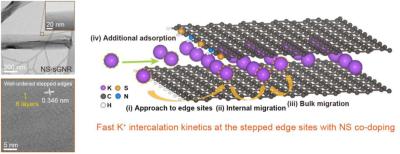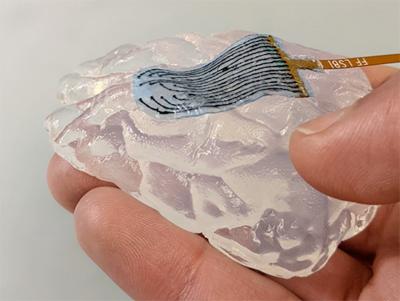
by all graphene | Oct 31, 2022 | 2D materials, Aeronautical and astronautical engineering, Aerospace, AGM, Aircraft, Angstron Materials, Audio, Carbon Nanotubes, Development, Energy, Energy storage, Graphene, Investment, Materials science and engineering, Nanoscience and nanotechnology, Products, Research, School of Engineering
Engineers at MIT and the University of Tokyo have produced centimeter-scale structures, large enough for the eye to see, that are packed with hundreds of billions of hollow aligned fibers, or nanotubes, made from hexagonal boron nitride. Hexagonal boron nitride, or...

by MBF Admin | Apr 15, 2022 | 2D materials, Aerospace, AGM, Angstron Materials, Audio, Carbon Nanotubes, Development, GNRs, Graphene applications, Graphene batteries, Investment, Products, Research, Technical / Research
A research team, led by Professor Yu Seung-ho of the Department of Chemical and Biological Engineering at Korea University, Seoul National University’s Professor Yuanzhe Piao and Sogang University’s Professor Back Seo-in, has fabricate nitrogen and sulfur...
by MBF Admin | Sep 30, 2021 | 2D materials, Aerospace, AGM, Angstron Materials, Audio, Carbon Nanotubes, Development, GNRs, Graphene applications, Investment, Products, Research, Stanford, Technical / Research
Researchers at Shanghai Jiao Tong University, Stanford University, and other US and China institutes have designed a strategy for creating graphene nanoribbons (GNRs) with smooth edges that are below 10 nm in width. This new method is based on the use of squashed...
by MBF Admin | Aug 18, 2021 | 2D materials, Aerospace, AGM, Angstron Materials, Audio, Carbon Nanotubes, Development, Graphene applications, Graphene Sensors, Investment, Products, Research, Technical / Research
Researchers at the Ningbo Institute of Materials Technology and Engineering (NIMTE) of the Chinese Academy of Sciences (CAS), led by Prof. Chen Tao, have developed a flexible and self-adaptive airflow sensor enabled by a graphene and CNTs membrane, which is mediated...

by MBF Admin | Jun 27, 2021 | 2D materials, Aerospace, AGM, Angstron Materials, Audio, Carbon Nanotubes, Development, Graphene applications, Investment, Medicine, Products, Research, Technical / Research
A team of scientists from Harvard’s Wyss Institute and John A. Paulson School of Engineering and Applied Sciences (SEAS) has created flexible, metal-free electrode arrays that conform to the body. This conformity allows, for example, electrical impulses to be recorded...
by MBF Admin | Jun 23, 2021 | 2D materials, Aerospace, AGM, Angstron Materials, Audio, Carbon Nanotubes, Development, GNPs, Graphene applications, Graphene batteries, Graphene investing and financials, Investment, Products, Research
CPI and Thomas Swan have teamed up with Johnson Matthey (JM), a company focused on sustainable technologies, to explore how to best optimize battery technology using graphene and CNTs.The ICE-Batt project receives funding support from the Faraday Battery Challenge,...




